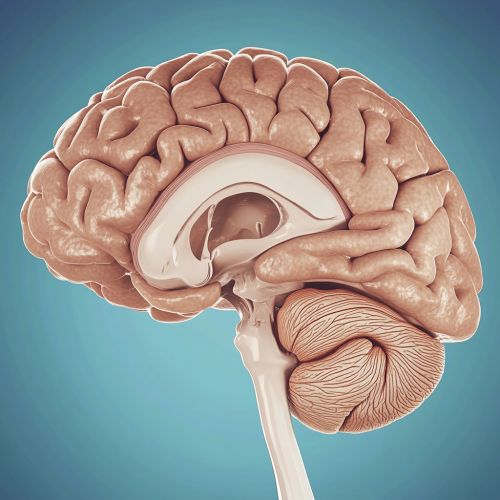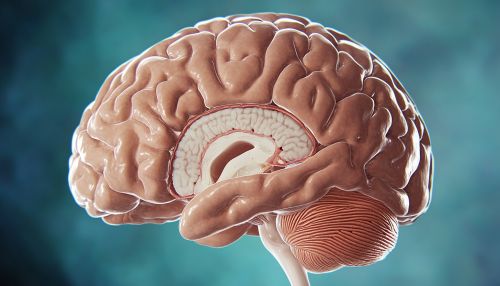Sexually dimorphic nucleus: Difference between revisions
(Created page with "== Introduction == The sexually dimorphic nucleus (SDN) is a distinct cluster of neurons in the brain that exhibits differences in size, shape, and cell number between males and females. This nucleus is primarily located in the preoptic area of the hypothalamus, a region known for its involvement in the regulation of reproductive behaviors and endocrine functions. The SDN has been extensively studied in various species, including rodents, primates, and humans, revealing...") |
No edit summary |
||
| Line 7: | Line 7: | ||
The SDN is situated within the preoptic area of the hypothalamus, which is a critical region for the control of reproductive behaviors. In rodents, the SDN is often referred to as the sexually dimorphic nucleus of the preoptic area (SDN-POA). In humans, a comparable structure is known as the interstitial nucleus of the anterior hypothalamus (INAH). The SDN is characterized by a higher density of neurons in males compared to females, a difference that is established during a critical period of development. | The SDN is situated within the preoptic area of the hypothalamus, which is a critical region for the control of reproductive behaviors. In rodents, the SDN is often referred to as the sexually dimorphic nucleus of the preoptic area (SDN-POA). In humans, a comparable structure is known as the interstitial nucleus of the anterior hypothalamus (INAH). The SDN is characterized by a higher density of neurons in males compared to females, a difference that is established during a critical period of development. | ||
[[Image:Detail-97877.jpg|thumb|center|Detailed anatomical illustration of the human brain highlighting the hypothalamus and preoptic area.|class=only_on_mobile]] | |||
[[Image:Detail-97878.jpg|thumb|center|Detailed anatomical illustration of the human brain highlighting the hypothalamus and preoptic area.|class=only_on_desktop]] | |||
== Developmental Mechanisms == | == Developmental Mechanisms == | ||
Latest revision as of 13:44, 4 September 2024
Introduction
The sexually dimorphic nucleus (SDN) is a distinct cluster of neurons in the brain that exhibits differences in size, shape, and cell number between males and females. This nucleus is primarily located in the preoptic area of the hypothalamus, a region known for its involvement in the regulation of reproductive behaviors and endocrine functions. The SDN has been extensively studied in various species, including rodents, primates, and humans, revealing significant insights into the neural mechanisms underlying sexual differentiation and behavior.
Anatomical Location and Structure
The SDN is situated within the preoptic area of the hypothalamus, which is a critical region for the control of reproductive behaviors. In rodents, the SDN is often referred to as the sexually dimorphic nucleus of the preoptic area (SDN-POA). In humans, a comparable structure is known as the interstitial nucleus of the anterior hypothalamus (INAH). The SDN is characterized by a higher density of neurons in males compared to females, a difference that is established during a critical period of development.


Developmental Mechanisms
The development of the SDN is influenced by hormonal and genetic factors. During the perinatal period, exposure to androgens such as testosterone plays a crucial role in masculinizing the SDN. In males, testosterone is converted to estradiol in the brain by the enzyme aromatase, which then acts on estrogen receptors to promote the growth and differentiation of SDN neurons. In females, the absence of high levels of testosterone and estradiol results in a smaller SDN.
Hormonal Regulation
The size and cell number of the SDN are regulated by sex hormones. In males, the presence of testosterone during critical periods of development leads to a larger SDN. This process is mediated by the conversion of testosterone to estradiol within the brain. In females, the lack of significant androgen exposure results in a smaller SDN. Additionally, the SDN remains sensitive to hormonal changes throughout life, with fluctuations in hormone levels potentially affecting its structure and function.
Functional Significance
The SDN is implicated in the regulation of sexually dimorphic behaviors, which are behaviors that differ between males and females. In rodents, lesions of the SDN-POA result in disruptions of male-typical sexual behaviors, such as mounting and intromission. In humans, the INAH has been associated with sexual orientation and gender identity, although the exact nature of these associations remains a topic of ongoing research.
Comparative Studies
Comparative studies across species have provided valuable insights into the evolutionary conservation and divergence of the SDN. In rodents, the SDN-POA is well-defined and exhibits clear sexual dimorphism. In primates, including humans, the INAH shows similar patterns of sexual dimorphism, although the differences are less pronounced. These studies suggest that the SDN plays a fundamental role in the neural regulation of reproductive behaviors across species.
Clinical Implications
Understanding the SDN has important clinical implications, particularly in the context of disorders of sexual development and gender dysphoria. Abnormalities in the development or function of the SDN may contribute to atypical sexual behaviors and gender identity issues. Research into the SDN may also inform therapeutic approaches for conditions such as hypogonadism and other endocrine disorders that affect sexual differentiation.
Research Methodologies
Various research methodologies have been employed to study the SDN, including histological analysis, immunohistochemistry, and neuroimaging techniques. Histological analysis involves examining brain tissue samples to identify and measure the SDN. Immunohistochemistry uses antibodies to detect specific proteins within the SDN, providing insights into its molecular composition. Neuroimaging techniques, such as magnetic resonance imaging (MRI), allow for the non-invasive study of the SDN in living subjects.
Future Directions
Future research on the SDN aims to further elucidate the molecular and genetic mechanisms underlying its development and function. Advances in genetic engineering and neuroimaging technologies hold promise for uncovering new aspects of SDN biology. Additionally, interdisciplinary approaches integrating neuroscience, endocrinology, and psychology are likely to provide a more comprehensive understanding of the SDN and its role in sexual differentiation and behavior.
